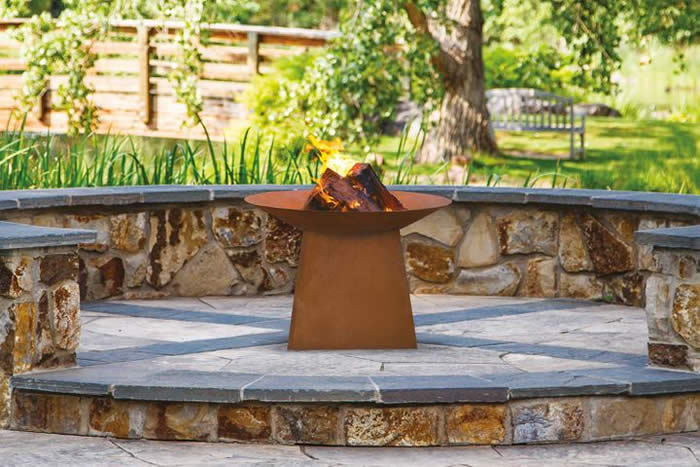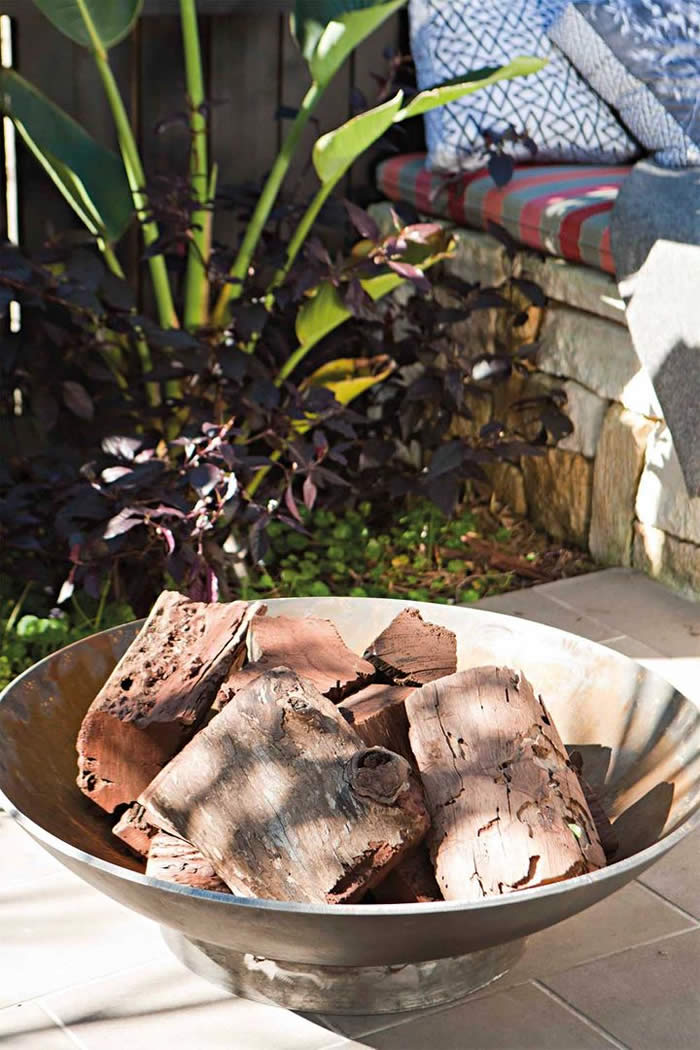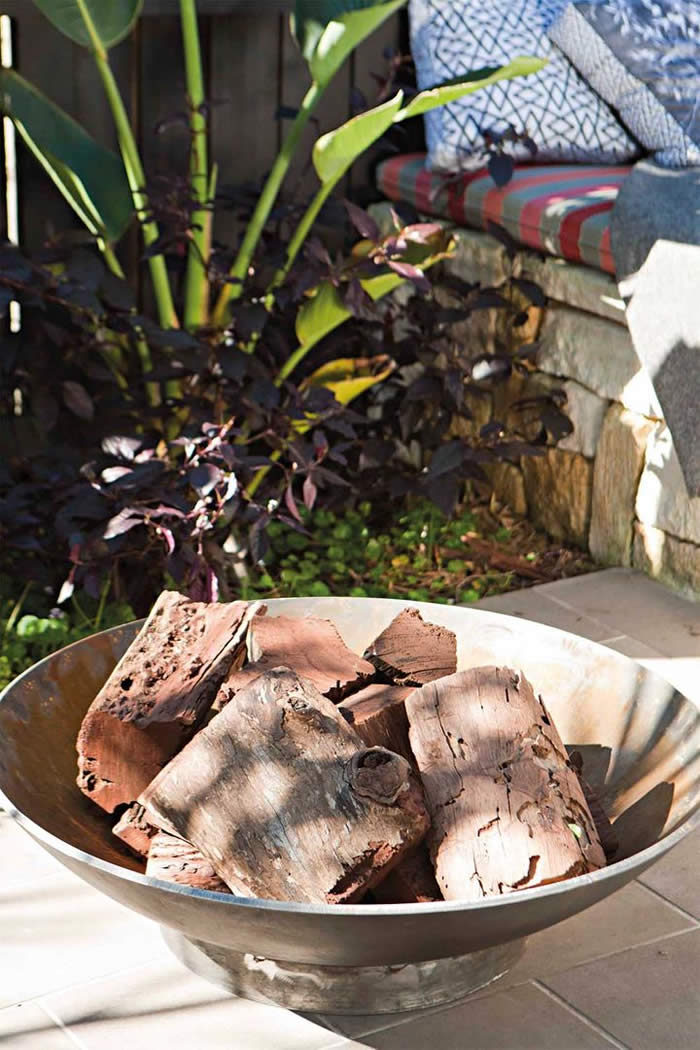More than just an eye-catching addition to your backyard, an outdoor fire pit will have you hosting flaming hot parties or enjoying toasted marshmallows with the kids, whenever you please!
But before you take the plunge and place one in your garden, you’ll need to consider the design and size of your garden or courtyard, in order to figure out what type of fire pit will best suit the space.
1. Position
Remember that fires are a dirty business – they create soot after burning and murky black sludge that seeps through drainage holes at the base after rain, so it’s important to allow for cleanup and avoid it ruining your outdoor furniture and paving. Look at creating a bed of sand or gravel beneath your fire pit to create a level base so the water can drain freely.
“When you put a fire pit onto paving they’re prone to making a mess,” says landscape designer Adam Robinson from Adam Robinson Designs. “We did one recently in the back area of the garden and placed it half on the paved area and half in the garden bed, which worked well.”
A fire pit can extend the life of your outdoor entertaining area well into the winter months and, with a little planning and thoughtful design in the layout and position, will work beautifully as a welcoming place to gather with friends.

2. Fuel
If you’re looking to create the ambience of having a fire to gather around but are limited by space, lack a lawn or put off by the mess it creates, a great alternative is an ethanol fire pit. Portable and ready to go, you can move these around in your garden, onto your deck or outdoor room with a minimum of fuss.

3. Seating
Seating around the fire pit is essential. Bench seats, outdoor sofas, chairs and ottomans are all flexible and and portable options, which allow you to change the position of the fire pit when needed.
“Consider non-precious seating, such as timber or stone,” says Adam, which can withstand the weather and plenty of outdoor fire action.
In terms of where to position it, “Flexible seating rather than fixed, allows for snuggling closer to the fire in the cooler months, and the ability to move a little further away when it’s warmer or you have the fire raging,” Adam suggests.

4. Style
It’s likely your fire pit will stay in position in your garden all year round so the style you choose should work with the rest of your landscape design.
“Not only do they take the chill out of outdoor entertaining,” says Tim Trussell from Northcote Pottery, “They are a feature piece in their own right and are sure to become the heart of the garden.” From a custom-made fire globe to a traditional clay chiminea or a rustic portable wood-burning fire pit, shop around for the size, style and price point to suit your needs.
“Look for a style that will nestle nicely into your garden landscape and that will age beautifully – something that will patina nicely,” encourages Adam.
Some fire pits come with a lid that can double as an outdoor coffee table in the warmer months and hide the mess of your fireplace when not in use.

From left: Molly (Mel)Drum fire pit including timber tray, $2,265, Robert Plumb | Northcote Pottery ‘Aurora’ rustic fire pit, $239, Bunnings | ‘Piccolo’ ethanol fire pit, $1295, Ecosmart Fire
5. Ambience
As you would in your interior spaces, aim to create a beautiful ambience and warmth to your outdoor area. Nature can help here. “Add some simple ingredients for extra aroma, such as cinnamon sticks for spicy warmth (ideal for any Christmas in July), or dried oranges for a citrus twist,” says Tim.
“Burning a fire is great to keep the mozzies away,” says Adam and Tim suggests using natural insect repellants by burning sage or rosemary in your fire pit. “This also adds a delicious perfume to the surrounds,” he says.







